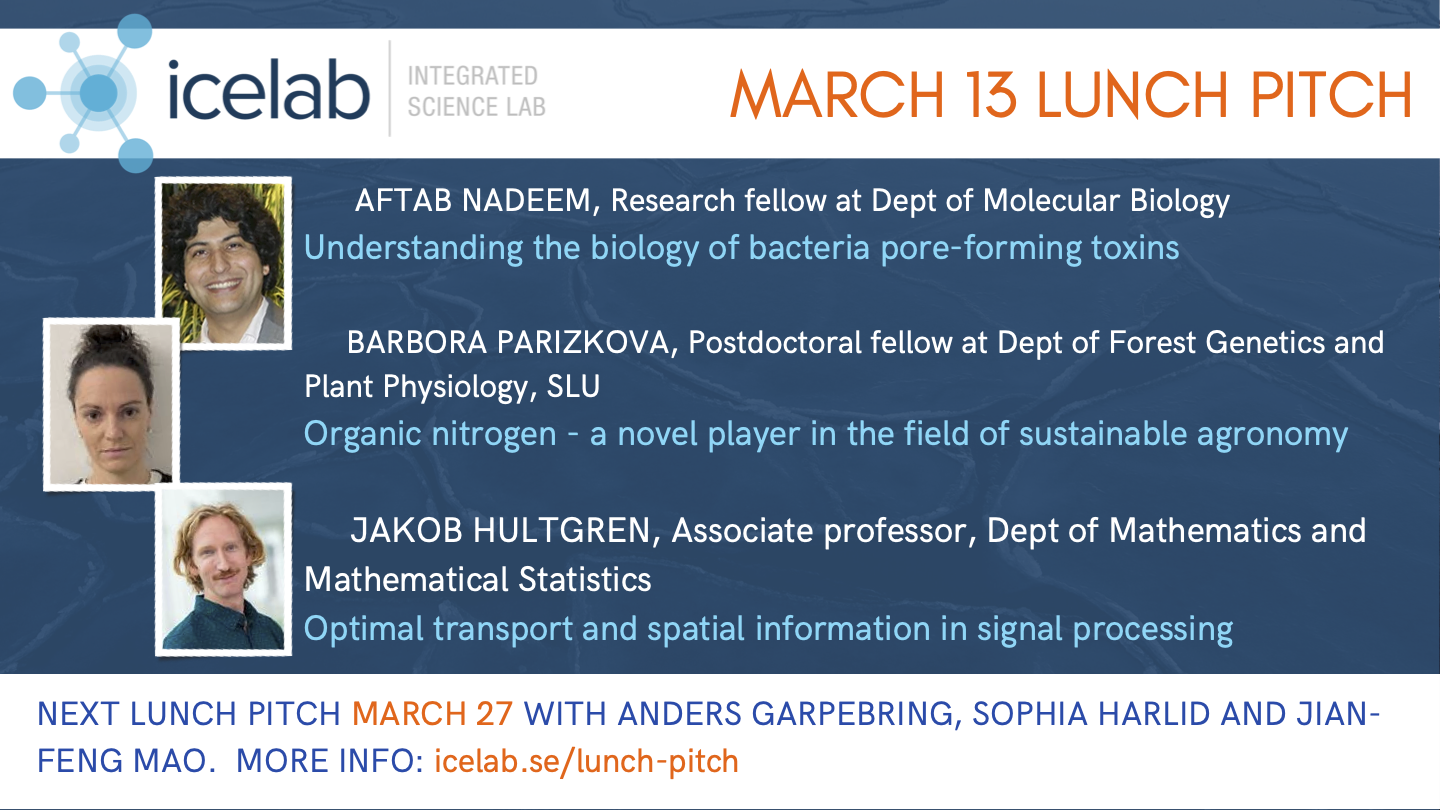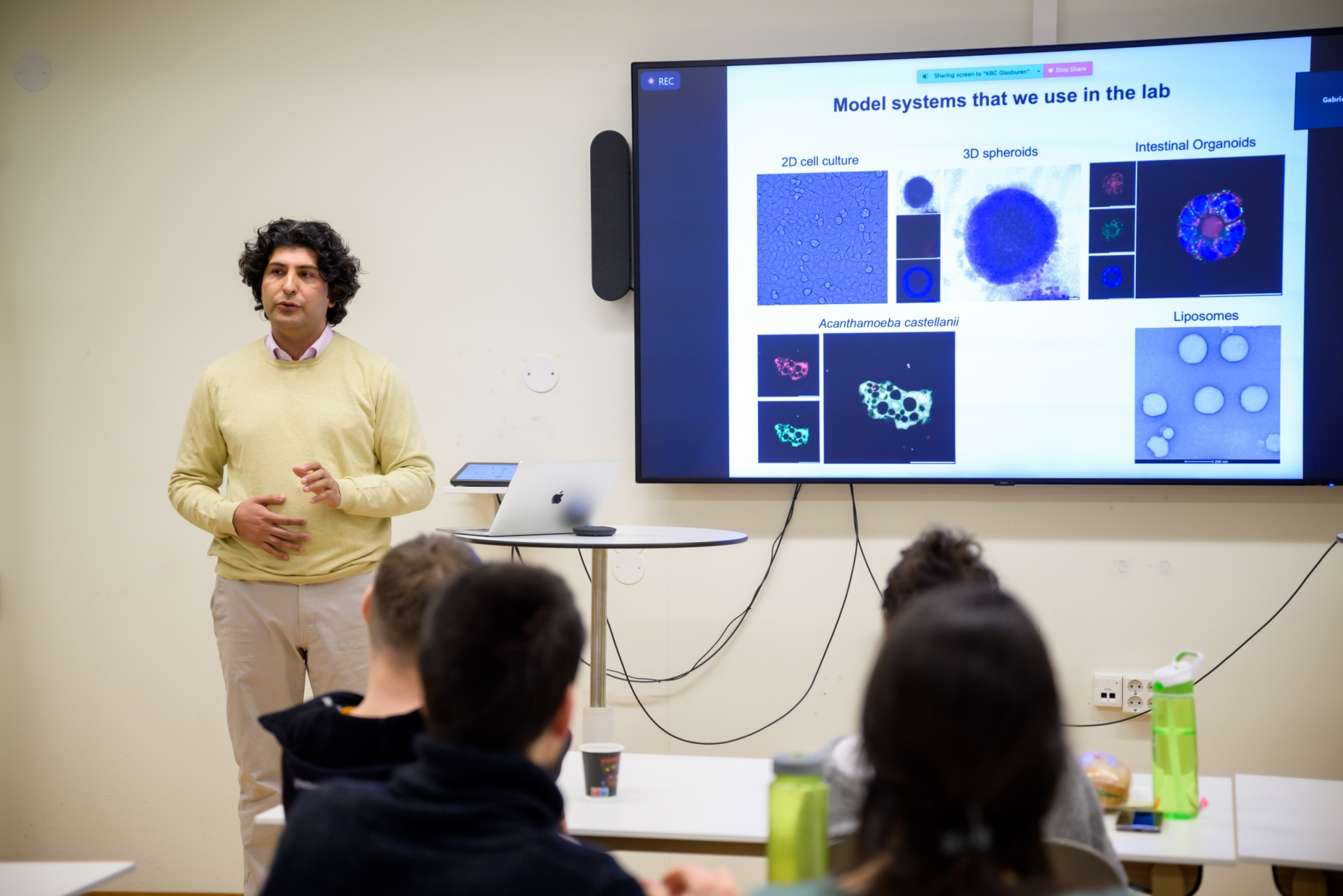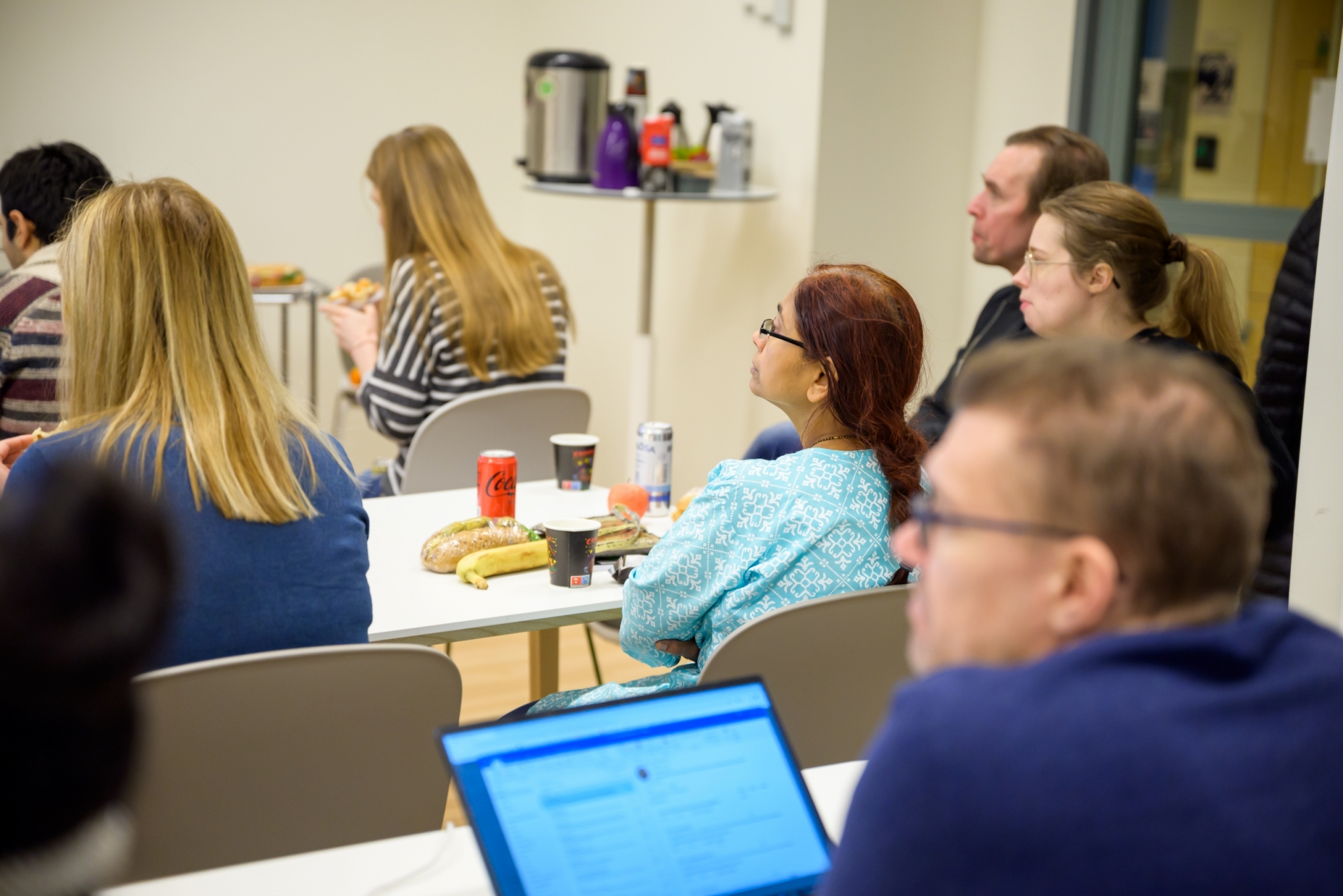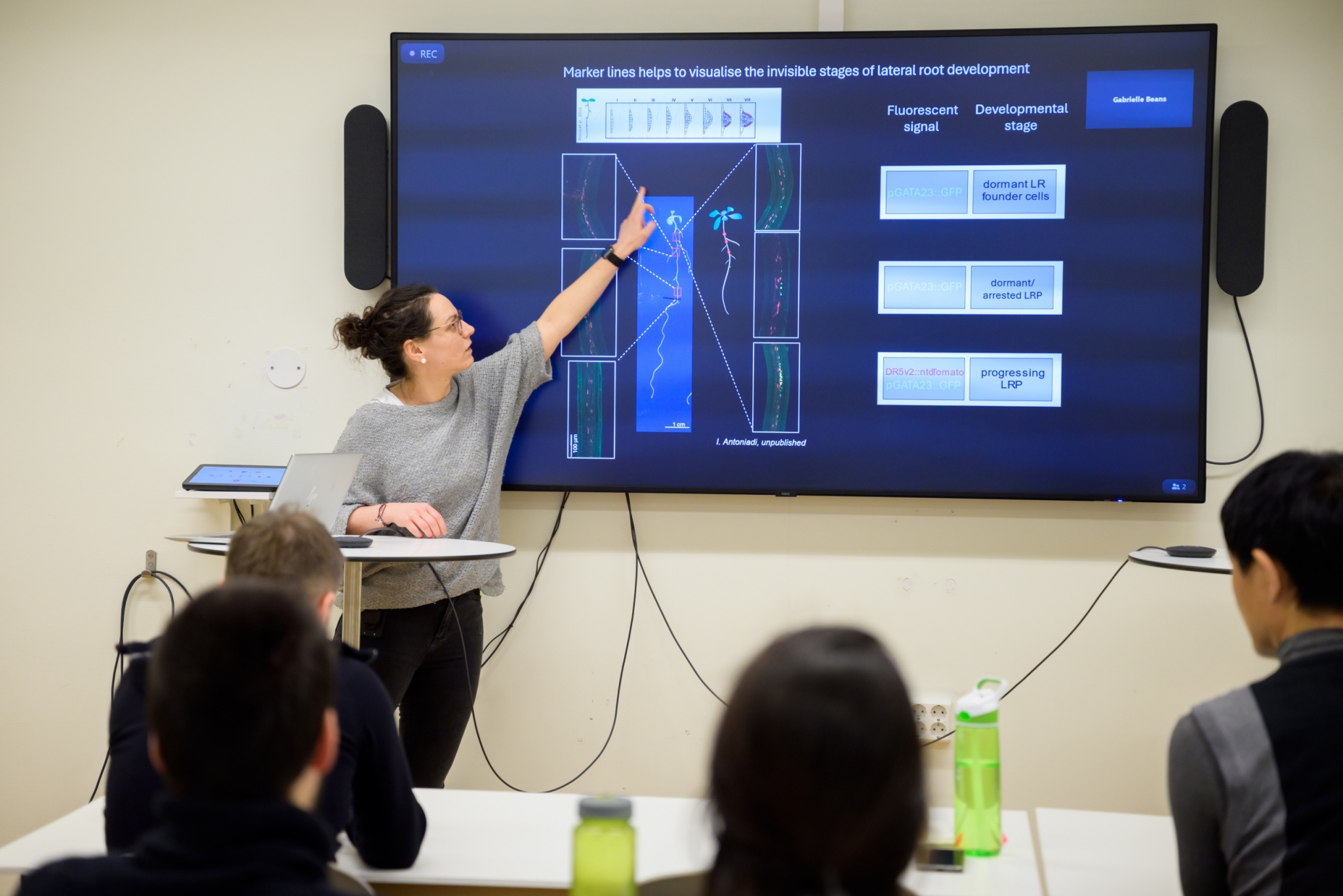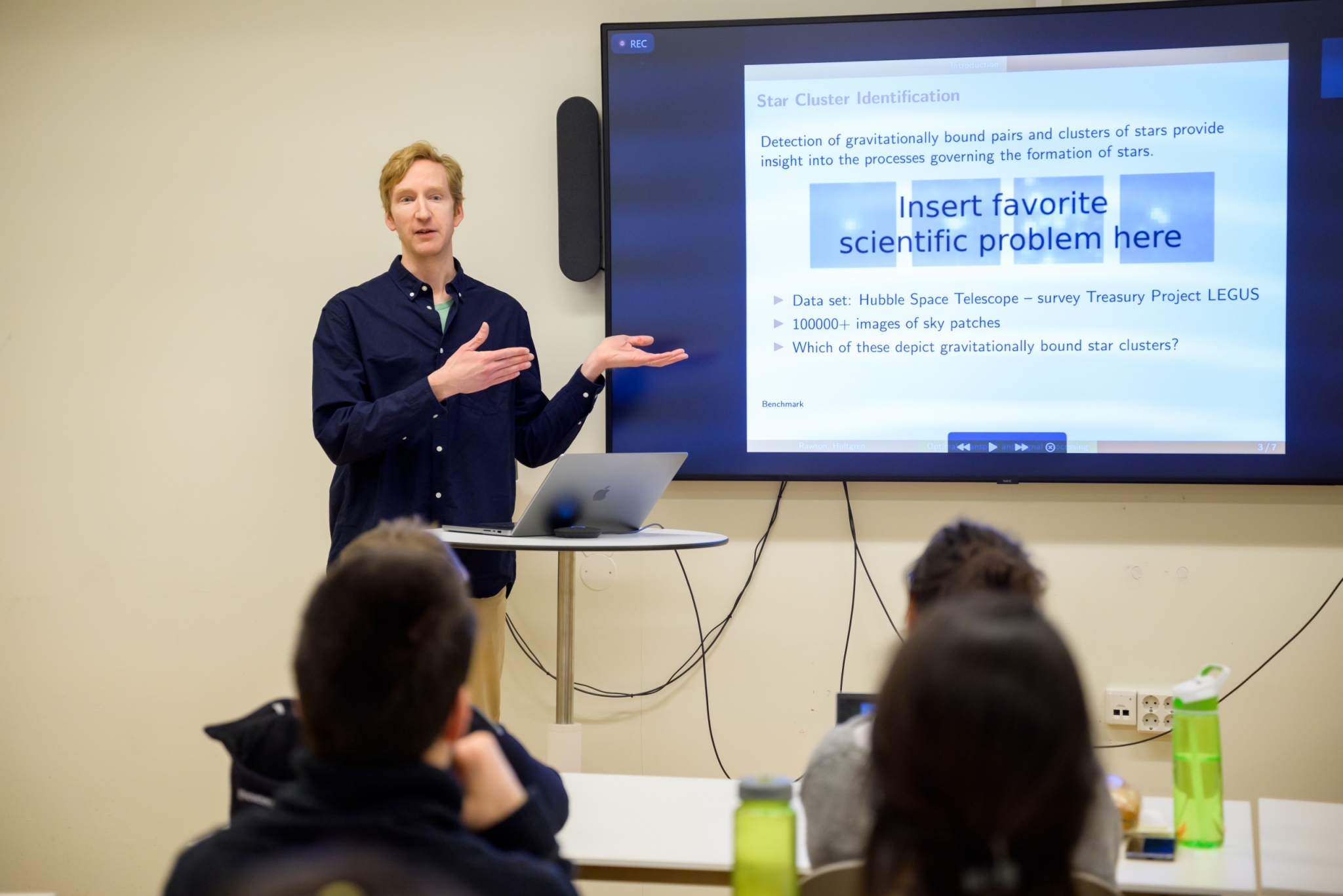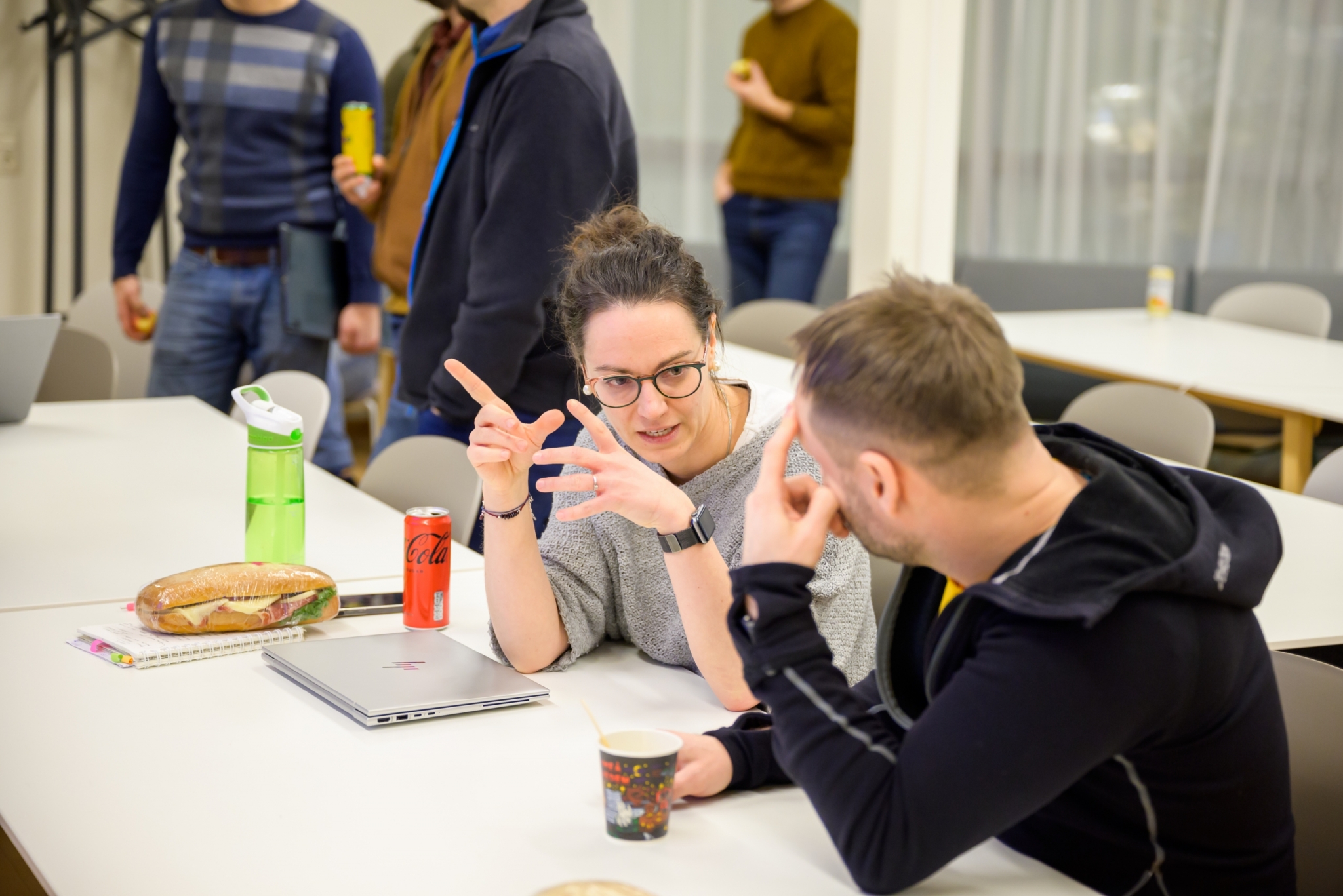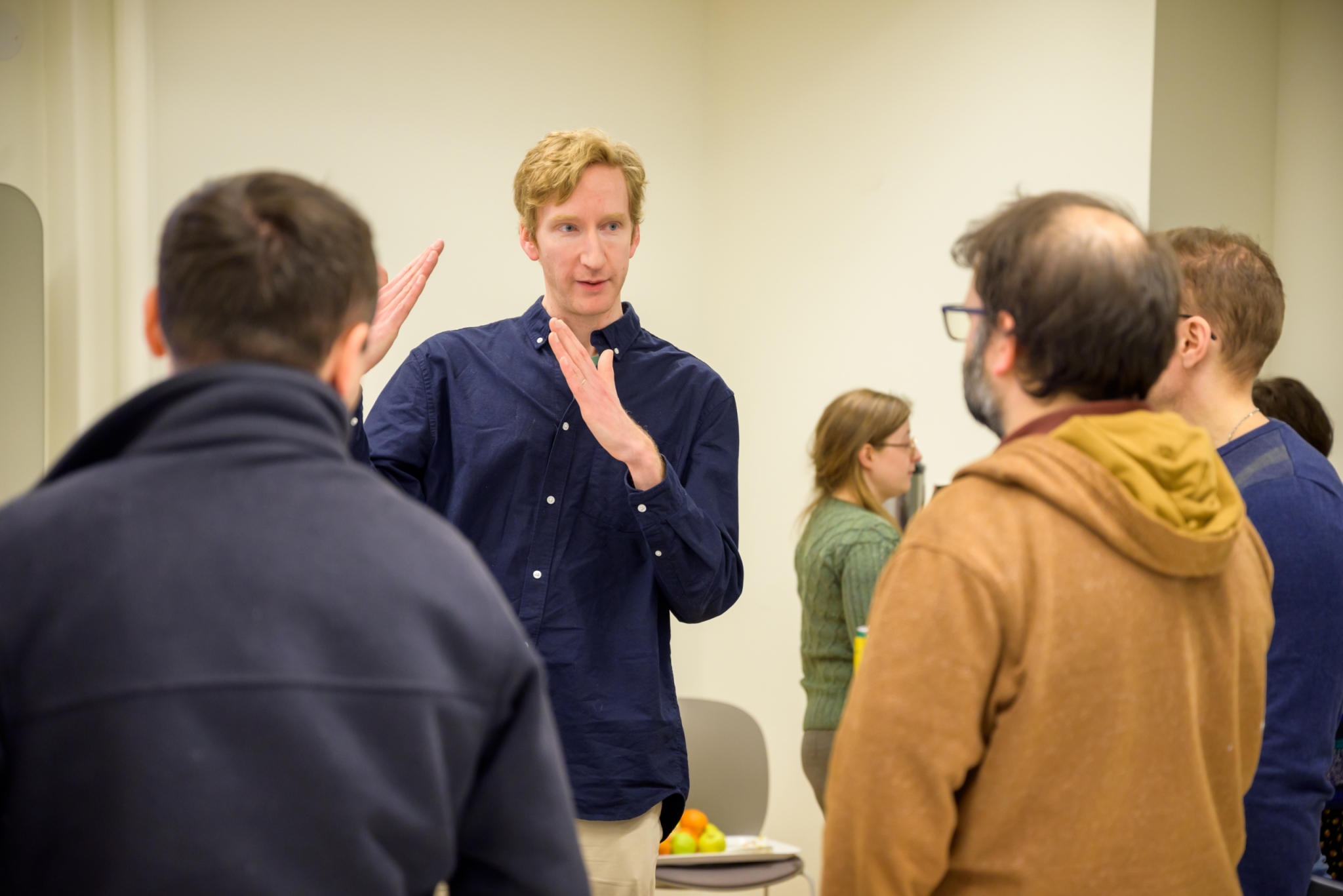Understanding the biology of bacteria pore-forming toxins – pitch by Aftab Nadeem, Research fellow, Department of Molecular Biology
Aftab Nadeem is interested in understanding the biology of bacteria pore-forming toxins, so-called PFTs. Humans host thousands of different bacteria species all throughout the body. In some places they are helpful – in the gut they assist in food digestion, while in other cases they can cause disease. Aftab is working with the bacterium vibrio cholerae that is found in aquatic environments where it interacts with several organisms including Acanthemoeba castellani and C. elegans.
When exposed to contaminated water, pore-forming toxins from the bacteria make ‘holes’ in our cell membranes and we get infected. However, the bacteria do not always succeed in killing their hosts. For example, Acanthamoeba castellani can resist PFT activity and survive.
Aftab wants to find out more about protein receptors and inhibitors for pore-forming protein toxins. He is particularly focused on identifying the factors produced by Acanthamoeba castellani that inhibit the activities of PFT, and identifying the protein receptors for PFTs located on the surface of mammalian cells. He welcomes collaborators who share his interest in these questions.
Organic nitrogen – a novel player in the field of sustainable agronomy – pitch by Barbora Parizkova, Postdoctoral fellow, Department of Forest Genetics and Plant Physiology, SLU
Healthy roots are essential for healthy plants, as Barbora shows in the beginning of her pitch. Nitrogen (N) is an essential macronutrient and a growth-limiting factor for plants. Inorganic nitrogen fertilizers, like ammonia and nitrates, are well-studied and frequently used but have negative environmental effects. Organic nitrogen is less well studied and could provide a good substitute. Barbora’s research has demonstrated that organic nitrogen in the form of glutamine (GLN) significantly enhances lateral root formation compared to an inorganic nitrogen treatment. She has shown that this GLN effect is highly dependent on auxin – a plant hormone that is a major regulator of root development – however, the molecular mechanisms behind the GLN root-promoting effects are still poorly understood.
Barbora aims to identify the genes responsible for GLN-induced lateral root growth through the implementation of forward and reverse genetics screens using mutant lines of Arabidopsis thaliana. In addition, she has developed a set of novel marker lines for genes potentially involved in the early stages of lateral root development. Confocal imaging will be employed to investigate the expression of these genes in response to GLN. The results of this confocal imaging relate to her reason for giving a pitch – she hopes to find collaborators to help develop a system of machine learning-based high-throughput image analysis of various stages of lateral root development.
Optimal transport and spatial information in signal processing – pitch by Jakob Hultgren, Associate professor, Department of Mathematics and Mathematical Statistics
As a theorist, one of the aspects of science that Jakob finds most fascinating is the versatility of its tools. Jakob’s pitch began with an example of a problem from astronomical imaging. A collaborator and he sought to automatically detect star clusters in images of the sky from the Hubble telescope. Doing this provides important information about the processes governing the formation of stars. However, in his pitch he wanted to discuss not star clusters, but how the method he developed could be applied to the audience’s favorite scientific problems. Essentially, he has developed an approach to tackle the very basic problem of reconstructing reality from a set of imperfect measurements. There are many conceptual frameworks for this, for example compressed sensing and super resolution. The tool Jakob uses is relevant to most of these frameworks. It is called optimal transport, and it provides a way to preserve spatial or geometric information when performing signal processing.
Jakob is hoping to launch cross-disciplinary collaborations. Stripping the problem above of its astronomical context, it becomes a general problem in image processing which may have application in medicine, biology and many other fields. He believes that the most effective solutions to real world problems build on sophisticated theory and that the best theoretical frameworks grow out of frequent interplay with applications.

